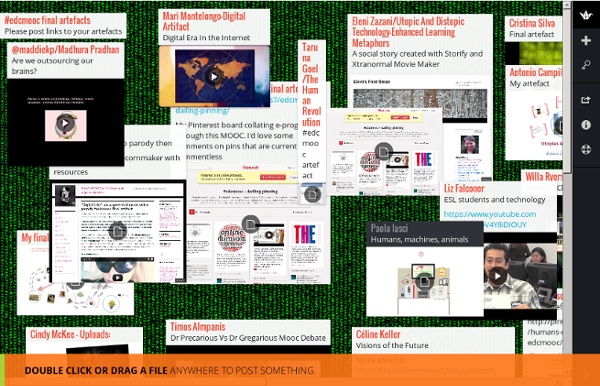



Transhumanist Values 1. What is Transhumanism?Transhumanism is a loosely defined movement that has developed gradually over the past two decades.[1] It promotes an interdisciplinary approach to understanding and evaluating the opportunities for enhancing the human condition and the human organism opened up by the advancement of technology. Attention is given to both present technologies, like genetic engineering and information technology, and anticipated future ones, such as molecular nanotechnology and artificial intelligence.The enhancement options being discussed include radical extension of human health-span, eradication of disease, elimination of unnecessary suffering, and augmentation of human intellectual, physical, and emotional capacities. Other transhumanist themes include space colonization and the possibility of creating superintelligent machines, along with other potential developments that could profoundly alter the human condition.
Openness, the double bind, and ecologies of yearning. » EdTech@VCCS I’ve seen my share of conference keynotes, some tedious, some exhilarating, many forgettable. But I have never seen a keynote quite like the one delivered by Gardner Campbell on the morning of the first day of the OpenEd Conference. For me, Gardner’s remarks, titled Ecologies of Yearning and the Future of Open Education, articulated the sense of vague discomfort I currently feel regarding the mainstream adoption of open learning. What we are seeing are developments in the higher education landscape that appear to meet every single one of the criteria we have set forth for open education: increased access, decreased cost, things that will allow more people than ever, on a planetary scale–1 billion individual learners at a time customize their education, fit it into their busy lives, earn a paycheck, find a path to a glorious vocational future. He answers quoting T.S. I hope you’ll take some time to watch the recording. Like this: Like Loading...
The Ecologies of Yearning #opened12 (with image, tweets) · audreywatters Ecology of ideas -- Bateson Bateson's Hierarchy of Learning Zero learning: "receipt of signal." Learning 1: "change in specificity of response by correction of errors of choice within a set of alternatives." Learning 2: learning to learn; premises are self-validating (trap at this moment because of this) Learning 3: meta-contextual perspective; puts self at risk; questions become explosive; this is not just adaptation, habitation -- strategies where you can choose to adapt or not; this is where we become most human, says Bateson. Learning 4: "probably does not occur in any adult living organisms on this earth" The hierarchy is discontinuous communication can be magically modified by communication there's something about a double bind that is a prison and the way out "transcontextual syndrome" beyond access and cost not merely open education but opening the possibility for networked transcontextualism. Don't fake the double-take The global open access brothel of non-learning
Artists' Techniques and Methods The Artists’ Techniques and Methods course will introduce you to a number of key works in Tate’s collection and examine the techniques the artists’ used to create their work. You will look at a range of techniques from drawing, watercolour, collage, and oil painting. The course is divided into six units: Henri Gaudier-Brzeska’s Drawing TechniquesCollage TechniquesJMW Turner and WatercolourPre-Raphaelite Composition and SymbolismRex Whistler’s Oil TechniquesRichard Hamilton and Mixed Media Each unit examines different artists in Tate’s collection and looks at how they created their work. The units contain video clips and step-by-step guides to using the techniques to create your own art works at home. The units are accompanied by downloadable worksheets that you can print out and follow in your own time. The course is designed to be fun and engaging but is not tutored or accredited, and does not count towards any official qualification. Free sample View sample pages from the course.
Digital Learning Network The New Script for Teaching Handwriting Is No Script at All